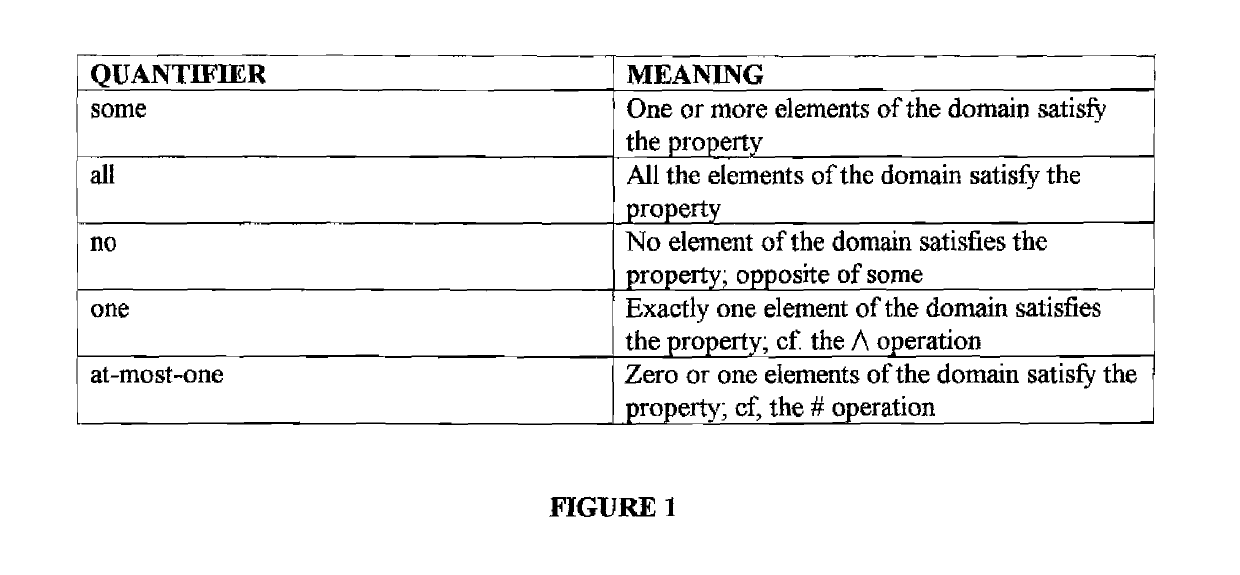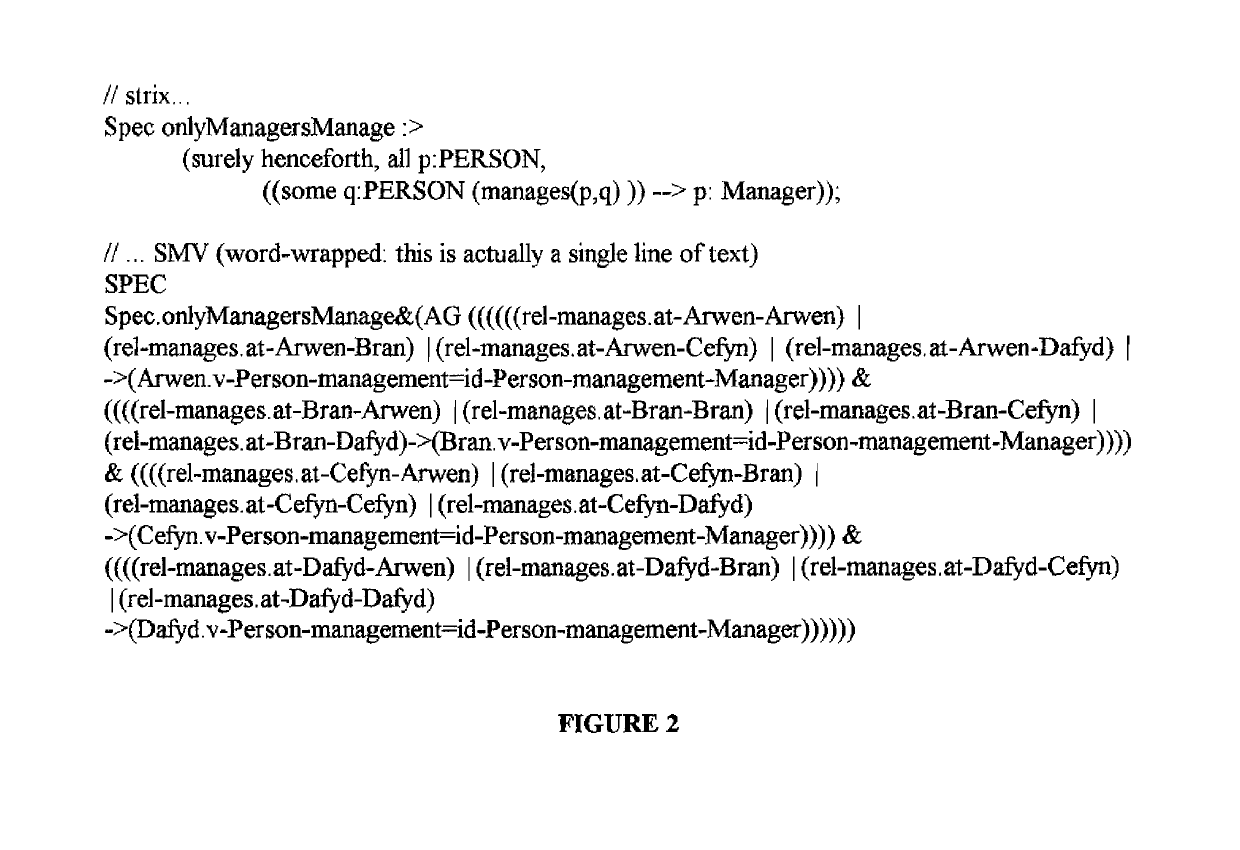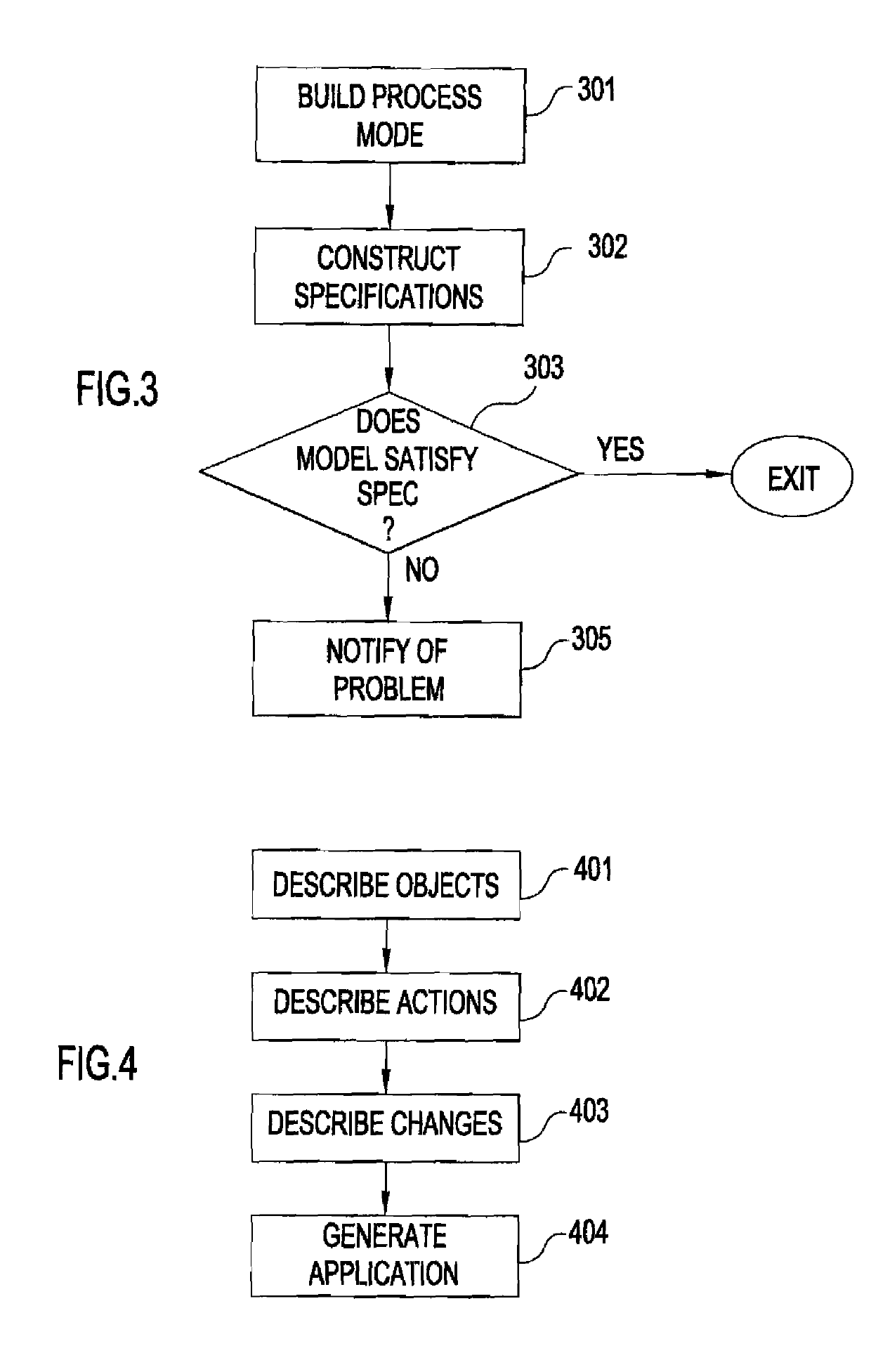Method and apparatus for providing symbolic mode checking of business application requirements
a business application and symbolic mode technology, applied in the field of business applications, can solve the problems of difficult modeling, development and use and unpredictable behavior of fully-developed business applications
- Summary
- Abstract
- Description
- Claims
- Application Information
AI Technical Summary
Benefits of technology
Problems solved by technology
Method used
Image
Examples
Embodiment Construction
[0020]To model business applications, it is first to be recognized that business software tends to be very data-driven. A great many human-computer interactions involve recording data, entering names and addresses on applications, recording boxes of supplies received at loading docks, etc. The program's decisions, and the decisions that it presents to users, are typically conditioned on data. For example, a travel reimbursement for less than $100 / day might be automatically accepted and paid, whereas a more expensive one might need a manger's approval, and one for $1500 / day might require a series of approvals at higher management levels.
[0021]Partially as a consequence of this, under the present invention, business data is multiply, dynamically categorized. Multiple categorization models the fact that a person might be an employee or a customer, both, or neither. Dynamic categorization captures the fact that a person can be hired or fired. Standard object models, even multiple inheri...
PUM
 Login to View More
Login to View More Abstract
Description
Claims
Application Information
 Login to View More
Login to View More - R&D
- Intellectual Property
- Life Sciences
- Materials
- Tech Scout
- Unparalleled Data Quality
- Higher Quality Content
- 60% Fewer Hallucinations
Browse by: Latest US Patents, China's latest patents, Technical Efficacy Thesaurus, Application Domain, Technology Topic, Popular Technical Reports.
© 2025 PatSnap. All rights reserved.Legal|Privacy policy|Modern Slavery Act Transparency Statement|Sitemap|About US| Contact US: help@patsnap.com



